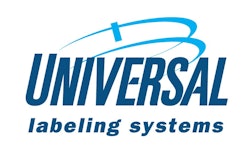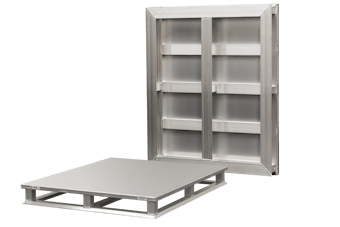
Contract packaging and manufacturing services are becoming a staple in getting products to market in many industries. One particular hotbed of growth is the pharmaceutical sector.
Within pharma products, Brecon Pharmaceuticals in Wales is among the principal global contract-packaging players. Recently, Steve Kemp, business development director at Brecon, discussed co-packing’s surge in pharma over the past 10 years in a podcast with Pat Reynolds, editor of Packaging World, a sister publication of Contract Packaging.
Following is the gist of that discussion.
Reynolds: We all know that contract packaging is done an awful lot.
Kemp: And it’s growing.
Reynolds: Why is that? When you say it’s growing, is that in the UK or is that globally?
Kemp: It’s growing globally because there is so much pressure now on the pharma companies. They spend billions of dollars, when you think about it, trying to research a new molecule (drug) through their R&D. A new drug starts from an active ingredient, which they need to find, and then have that tested and find where the therapeutic benefit is. Before that, you’ve got to test it in the lab and on humans to make sure that it’s not going to be fatal, to determine how it’s going to be taken, and that there is going to be some sort of therapeutic benefit.
Reynolds: So pharma companies already invest an awful lot in that.
Kemp: They invest in that and then go through a particular clinical trial, which involves getting a particular drug packed. Then you have to compare it against a different comparator, which could be a known product already on the marketplace, or you compare it against a placebo. And these clinical trials take hundreds of thousands or millions of dollars to do. And from what I understand, the rule of thumb is that for every 10 trials that go on, only one is successful and gets through to the next phase. So you’ve got phase one, phase two, there could be phase two-A and phase two-B, and then it goes into phase three. And then after phase three, you have to make sure that if it’s still successful, and the statisticians have proved that there is a therapeutic benefit in that particular drug, then you try and get that drug licensed. That could take another nine months.
Reynolds: And tell me, does the clinical trial also include packaging?
Kemp: We do clinical packaging here, so actually the trial product does have to be packed. But you’ve got blinded studies or double-blinded studies. For example, you’ve got product A, which is the new drug that’s coming out, versus product B, which is known in the market. So what you’re trying to test is whether product A has a benefit over product B.
And also, you need to try that against patients. Some patients are taking product A, and some patients are taking product B, and the statisticians are trying to compare between the two whether there is a particular benefit. Because you are reporting at the end of each day, or the end of each week, your feedback is part of your clinical study, how you’re feeling, and what side effects you are having.
Reynolds: So let’s get back to packaging. What you’re saying, I think, is that the pharma companies invest an incredible amount in getting a new drug developed and tested and through clinical trials.
Kemp: It costs millions of dollars to try and do that. Also, there is growing pressure for the big pharma companies to come out with these new drugs, and there are very few big blockbusters coming through. They’re all smaller launches, and they need to try and cut their costs accordingly. Because the packaging machinery does take up an awful lot of floor space, and you need to have trained people to do that in compliance with good manufacturing practices, why not look at outsourcing that particular piece? And, the pharma companies are trying to find these new molecules, do all the clinical trials through R&D, do the manufacturing, and then outsource the packaging and distribution piece.
Reynolds: And that’s where you come in.
Kemp: That’s where we come in. Ten years ago, the contract packing business was really what we call “peak lopping.” If there were over-capacity in a pharma unit, then the pharma companies would seek help by subcontracting that particular packaging piece outside. There was not enough capacity internally, so they needed to find somebody outside to help.
Today, there has been a big move to what they call strategic outsourcing; we’re never going to do this particular piece in-house, we’re going to outsource it somewhere else. So we need to have a partner to work with. The pharma companies can work in many ways, possibly on new product launches. These companies are looking at smaller quantities. There are no major blockbusters out there any more. They’re not quite sure how this particular drug is going to catch on. So they would rather invest maybe $60,000 to $100,000 worth of tooling and time in this particular product being packaged outside by a contract packing company rather than buying a new line, trying to find space in their existing factory to put the new line in, getting people trained to run the line, which could cost them the better part of a million dollars, and then finding out that they’re doing only 10,000 cartons, and it may not be successful on the shelf.
So they send production for that product launch outside.
If it’s successful, then the contract packing company is getting familiar with and good at packing this particular product, they’re getting high volumes. And the pharma company is now earning revenue because the product is being sold. The company can now look at investing and bringing that product back into its facility and maybe outsourcing a legacy product instead that is at the end of its life cycle and demand is going down. The pharma company will outsource that particular item and bring the new product back in-house while they can get a higher price for it in times of good demand.
Reynolds: So there is quite an ebb and flow to the whole dynamic of it all.
Kemp: There is, yes. I have got a chart/graph to track new-product introductions. You look at product growth, the product maturity, and then the decline. You invest in time and in new-product introductions, and then you try and get a product to its growth phase. So you understand the packaging in that sense and its demand in the marketplace and not have too many products in decline. And if all your products are in decline, where are the new products coming through to sustain the business?
Podcast available at: www.packworld.com/view-23701

























